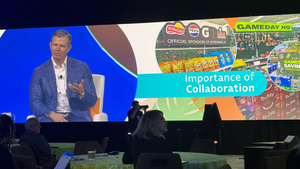Nonfoods Talk: The Science of Selling Skin CareNonfoods Talk: The Science of Selling Skin Care
Going beyond the basics is vital for retailers looking to make a difference in the health and beauty aisle.
January 1, 2018
I had some time to kill on a cold, rainy day in November between football games and eating turkey. So, I decided to spend some of it observing what goes on in the health and beauty care departments of several supermarket chains.
Not the most exciting way to spend a holiday weekend, but, hey, from my perspective at least it was a good way to get out of the house for a few hours.
My observations, far from scientific, were interesting nonetheless. The first thing I noticed was how consumers shopped the section and the amount of time they spent in the HBC aisles. A large percentage of women, for example, spent a lot more time perusing the HBC area than men. They visited more categories and they tended to look much more closely at products and labeling, and picked up more items to compare. Price, from my angle, did not seem to be much of an issue for most women, as few looked at the price point on retail shelves.
Some women, however, did not appear very interested. They seemed to hurry through the section, picking up what they need quickly and spending little time delving into the difference between products and brands.
Guys? Well, they just seemed to want to buy the first thing that popped out to them, with the notable exception of the razor/blades category. For the majority of HBC categories it seemed as if most men were simply eager to purchase a product that they perceive gets the job done and is priced right. Many were clearly looking at price points when deciding which item to purchase, especially with hair care and skin care products.
The aforementioned razor/blades segment was the one area that men seemed to pay a lot more attention to. Perhaps because of the high price points associated with the category, or the intense competition between several key brands, men were reading packaging, comparing price points and trying to get a better read on just what they were buying.
Which all leads us to a new study released by the Global Market Development Center (GMDC) that explores how Unilever and CVS worked together to build sales in the retailer’s skin care aisle. The goal, the study says, was to further engage consumers, build sales and build greater recognition of the Unilever brands that were being promoted.
Called the Love Your Skin campaign, the program consisted of special offers available exclusively through CVS Pharmacy for three Unilever brands: Dove, Vaseline and Simple. It was supported by content provided by a well-known dermatologist.
Like my own observations, the Love Your Skin study found that consumers were divided into a couple of basic groups. One was very involved in the category, looking for advanced regimens and willing to try new products that could further enhance their personal skin care. The other group seemed more interested in only the basics.
The bottom line for retailers that want to be successful with their HBC segment? They need to understand that consumer needs and demands dramatically vary. Offering the basics is a must for any supermarket operation looking to get any sort of traction in this category. Going way beyond the basics—including carry a large assortment of brands and in different price points—is vital for any merchant that is looking to make a difference in the health and beauty areas.
Space and a commitment to multiple brands—and not pricing—become the differentiation points between those retailers that want HBC to be a big part of their overall strategy and those that do not. The good news for merchants is that the final decision is ultimately in their own hands.
About the Author
You May Also Like




